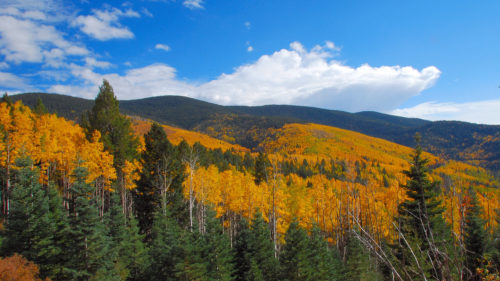(This story first appeared in the Spring 2014 Outdoor Reporter.)
By John Crenshaw, New Mexico Wildlife Federation
Desert and Rocky Mountain bighorn sheep numbers are inching up in New Mexico, just as a recent federal judge’s decision cleared the way for resident hunters to receive the vast majority of bighorn tags for the first time ever.
The increasing populations will allow the Department of Game and Fish to augment many sheep populations in coming years and to re-establish bighorn herds in ranges they haven’t occupied in decades. In the meantime, tag numbers are expanding thanks to new hunts on some of the more recent herds.
The Department’s 2013 figures place the desert sheep population at 745 to 860 head and the Rocky Mountain population at 948 to 1,067. “The Rockies still outnumber desert, but the deserts are closing on them,” said Eric Rominger, head of the Department’s bighorn sheep project. “I suspect that in the next four-year cycle, deserts will become more numerous than Rockies.”
Simply put, desert sheep have more places to go.
“We’ve got more empty and under-occupied desert sheep habitat than we do for Rockies. So we’ll continue filling those, and we have more potential for new herds and more licenses down the road there, I think,” Rominger said.
The sheep managers’ plan for the immediate future is to augment established herds by transplanting additional animals into them, and get new ones started within a few years as sheep become available.
We seem to be under-occupied in the Big Hatchets, also the northern and southern Peloncillos,” Rominger said. The main problem: not enough ewes. Research showed that desert sheep herds need at least 45 ewes to kick population growth into a higher gear.
“So for augmentations, those two have our highest priority, because we’d like to get up to that 45- to 50-ewe threshold,” he said. The department’s Red Rock game pasture, where it raises desert bighorns for release into the wild, would be the source for a transplant this fall, but its numbers are limited.
“I think there will only be about 15 rams and 15 ewes available, so we would pick one of those two locations to augment,” Rominger added.
Although there’s something of a shortage of sheep to transplant, there’s no shortage of places to start new herds:
“The Sacramentos have potential, all the northern San Andres are empty, the Alamo Huecos are empty,” Rominger mused, “so we’ve got a lot of options.
“For a new herd, the Sacramentos would be highest on our list, but we need a transplant source outside of Red Rock. If sheep became available from either the Fra Cristobals or Caballos, it would speed that up, but with Red Rock only, that’s several years down the line.”
Rominger is upbeat about the future of established herds and hunters’ prospects of taking high-scoring rams.
Aerial and ground survey crews scoured the Ladron Mountains last year, for instance, and came up with surprisingly good results. “The Ladron population has been tiny since the transplants in ’92 and ’93, and we had the highest number of sheep ever – 57,” Rominger said.
“And of course there were those two really big rams,” he added, referring to a pair recently taken by hunters. “The new No. 5 in the world and the new No. 11 came out of that Ladron population.” The bigger ram, taken last year, scored 194 4/8 and reset the state record. The other, taken in 2012, scored 191 0/8. Scores for the other eight of the top 10 desert sheep taken in New Mexico range from 180 3/8 up to 188 2/8.
All 21 desert sheep hunters in 2013 and all but one in 2012 took sheep – a remarkable 98 percent success rate. But even so, Rominger said, “Based on helicopter surveys, we felt that maybe with the exception of the Ladrones, the best rams may have been left on the mountains. We have photos of big rams that have not been harvested,”
And a final bit of good news: The U.S. Fish and Wildlife Service is opening the long-closed San Andres National Wildlife Refuge, which lies within the White Sands Missile Range hunt area, to desert sheep hunting this fall, “so I suspect there are rams there that have not yet been looked at.”



